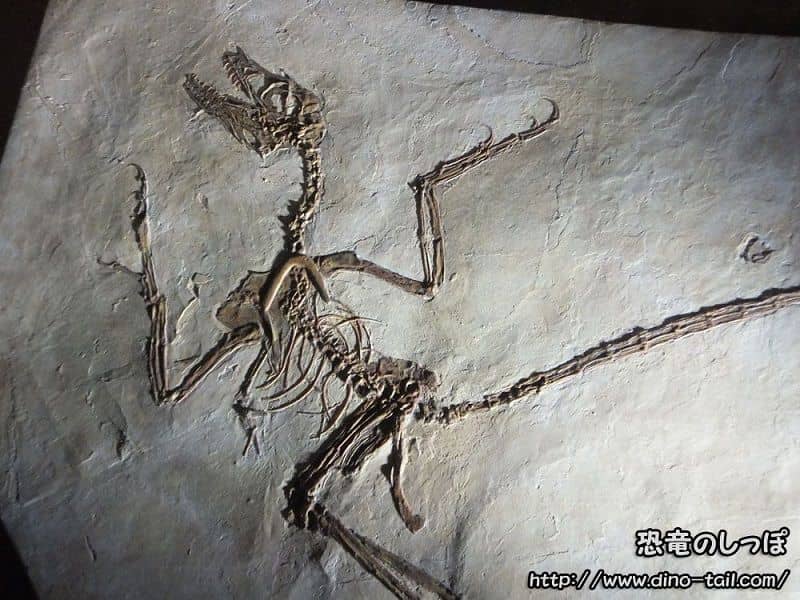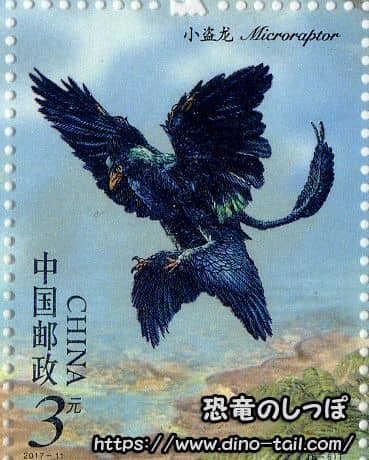About Microraptor
| Scientific Name (Genus) | Microraptor |
| Meaning of Name |
Tiny thief
mikros (small) [Greek] - raptor (thief) [Latin] |
| Classification | Saurischia, Theropoda (Tetanurae) |
| Total Length | Approx. 80cm |
| Diet | Carnivorous |
| Period | Early Cretaceous (approx. 120 million years ago) |
| Species |
Microraptor zhaoianus
(type species)
Microraptor gui Microraptor hanqingi *It is now widely believed that M. gui and M. hanqingi are the same species as the type species. |
| Year of Paper Publication | 2000 |
| Genus Name Publication |
The smallest known non-avian theropod dinosaur.
Nature, 408 by Xu, X., Zhou, Z., Wang, X. 2000. |
Features
Microraptor was a dromaeosaurid dinosaur closely related to birds that lived during the Early Cretaceous period (about 120 million years ago). It was only about the size of a crow. The most distinctive feature of Microraptor is that it had feathers for flight on all four of its limbs.
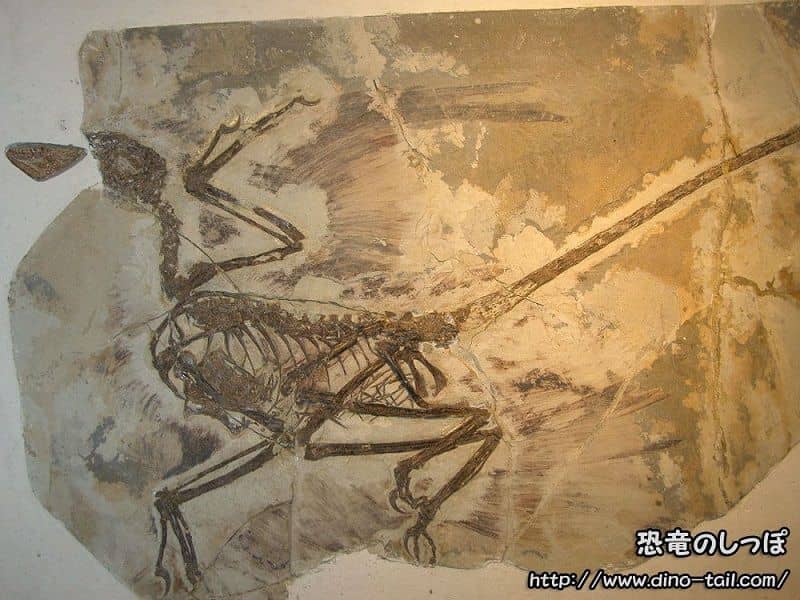
It is not known whether it used these wings to glide from trees like a flying squirrel or to fly by flapping from the ground like modern sparrows and pigeons, but it can be inferred that its sternum was large and it could move its wings powerfully. It preyed on insects and small mammals.
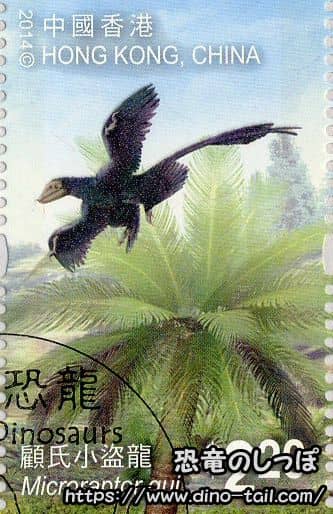
Its claws were sharp and curved, and are thought to have been adapted for grasping branches.
Although the debate is not settled, it is possible that it lived in trees.
From a specimen in which the pigment-containing melanosome tissue was preserved, it is known that Microraptor's feathers were a glossy black with an iridescent sheen that interfered with light.
This finding about its feather color suggests that Microraptor was active during the day, as modern birds with iridescent feathers are primarily diurnal. It was once thought to be nocturnal due to its large eye sockets, but in recent years, the nocturnal theory is being refuted.
The Last Supper: Fossils Reveal a Surprising Diet
For many years, it was assumed that Microraptor's diet consisted of insects and small mammals, but a series of discoveries has overturned this conventional wisdom. Amazingly, several fossils of its 'last supper' have been found with the stomach contents preserved intact.
- Inside the stomach of one specimen, a nearly whole, primitive bird was found.
- From another specimen, fish bones were discovered.
- And from yet another, the bones of a lizard were found.
These discoveries indicate that Microraptor was not specialized in any particular prey but was an extremely capable generalist (a predator that eats anything), hunting in a variety of environments: in the trees (birds), on the ground (lizards), and near the water (fish). Its four wings may have provided the superior maneuverability that made such diverse hunting possible.
The Hind Wings and Their Mystery
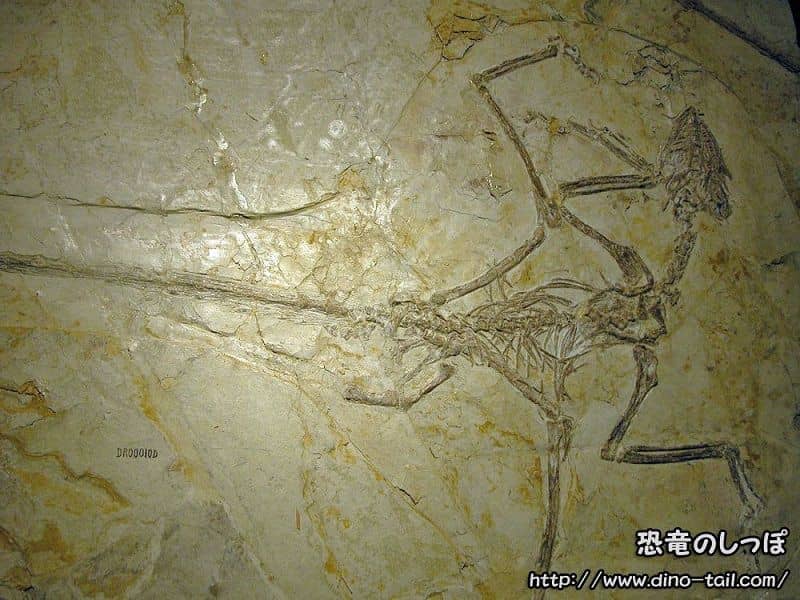
The strangest thing about Microraptor is that it had flight feathers not only on its forelimbs but also on its hind limbs. How it used these 'four wings' to fly is a major mystery and has been the subject of lively debate among scientists.
- Biplane model: Initially, it was proposed that it spread its hind legs to the sides and glided with two sets of wings, one above the other, like an early biplane.
- Tandem-wing model: However, subsequent research revealed that the structure of its hip joint would have made it difficult to spread its hind legs out to the sides. It is now more widely believed that it extended its hind legs beneath or slightly behind its body, using them as a second pair of wings (tandem wings) to increase stability while gliding.
In 2012, a theory was proposed that sheds light on this mystery: 'The hind wings may have been used for making sharp turns.'
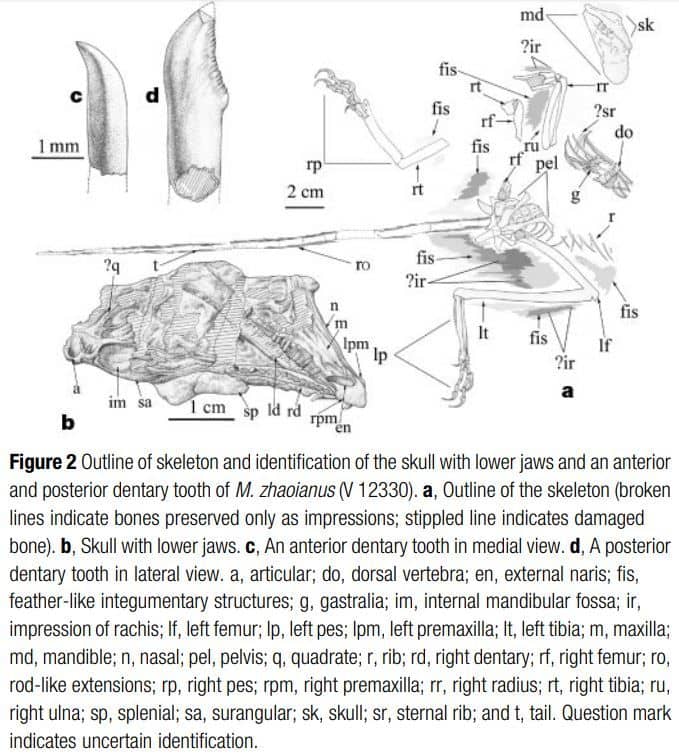
Source: The smallest known non-avian theropod dinosaur.
Nature, 408
by Xu, X., Zhou, Z., Wang, X. 2000.
Gracing the Cover of "National Geographic"
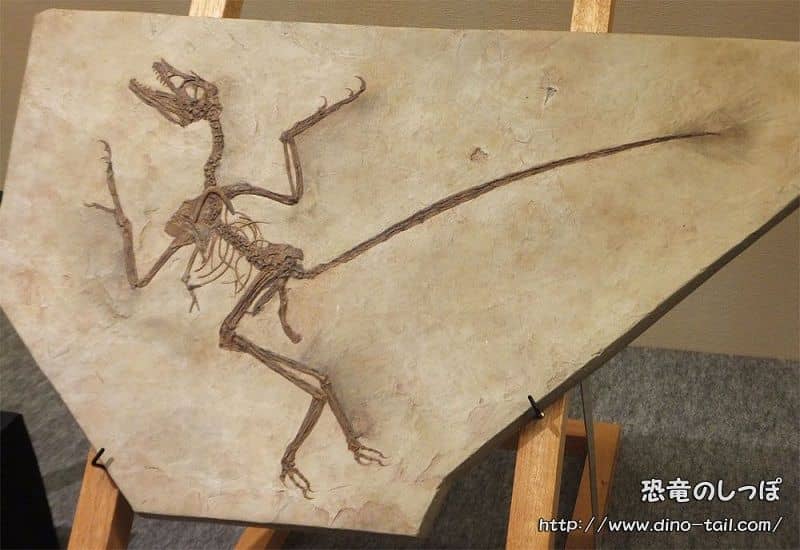
Microraptor was catapulted to fame when it was featured on the cover of the world-renowned photography magazine "National Geographic" in 1999.
This feathered dinosaur was named "Archaeoraptor liaoningensis" and published as a new species of dinosaur, but it was later found to have been a composite of two different species of fossils that had been incorrectly reconstructed. In 2000, it was redefined as "Microraptor zhaoianus."
Microraptor Stamp & Fossil Gallery
